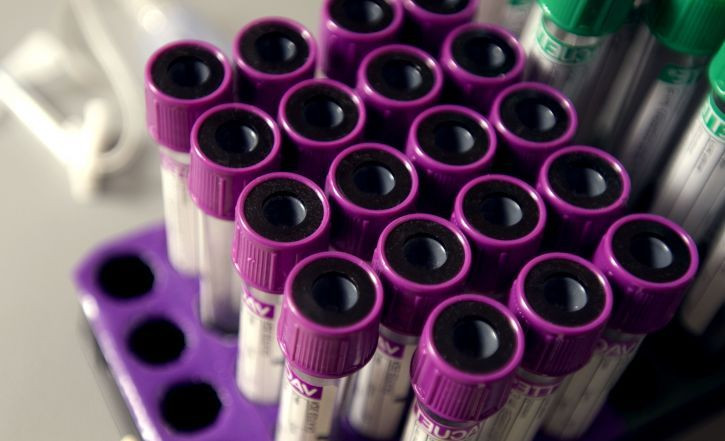Tranfusion Reaction: Mismatched Blood Type Donations Create 'A Sense Of Impending Doom' In Patients

Transfusions help replace blood lost during surgery or a serious injury, and have become a routine lifesaving procedure. Donated blood may be a miraculous intervention, but it can also put someone's life in jeopardy if the wrong blood type is transfused. So, what exactly happens to our bodies when the wrong blood type runs through our veins? People feel a "sense of impending doom" — literally.
This sense of doom, or that something terrible is happening, is a medical syndrome doctors are told to closely monitor. This is frequently reported by a recipient as an early sign of a mismatched blood type transfused, according to the University of Michigan Health System. Typically, the macrophages in the immune system engulf the foreign red blood cells, which then get filtered out of the blood vessels, and broken down in the liver and the spleen. The recipient will then excrete the red blood cells with other feces in these cases.
The blood that’s used in a transfusion depends on the recipient's blood type (A, B, AB, or O). This is determined by the presence or absence of two antigens — A and B — on the surface of red blood cells, and a third antigen, called Rh factor, that will either be present or absent, according to the American Red Cross. Antigens may trigger an immune response, which can cause the body to launch an attack if it comes across a foreign invader.
Our blood contains red blood cells that give us our blood type. Mismatching them will lead to a response that can lead to fever, chills, and aches if the recipient's immune system attacks the white blood cells that came with the new blood. The donor blood also contains platelets that can get broken down by the recipient, leading to dark, purple spots on the skin — purpura. However, most donor blood is separated into its components before it's sent off; white blood cells are entirely removed, known as leukodepletion.
Another complication that can arise happens when the immune system doesn't wait for the foreign red cells to clear the blood vessels before splitting them apart. Hemolysis, or the splitting of these cells, spills their contents into the blood vessels, and is then excreted in the urine. The color of urine will be dark brown, while red blood cells’ bilirubin will get spilled into the liver, break down the red blood cells, and then be excreted. Bilirubin has a yellow-brown color, and could potentially turn the recipient's body yellow.
Yellow skin and brown urine can be a cause for concern when the red blood cell debris in the blood vessels set off various reactions, like the activation of cell signaling proteins. This can lead the body to activate the membrane attack complex, and rip apart cells while spilled platelets from blood cells can lead to a cascade of blood clotting. This is what can potentially kill people in a mismatched blood transfusion.
If a transfusion reaction is suspected during blood administration, Medscape suggests to stop the transfusion, and keep the intravenous line open with 0.9 percent sodium chloride (normal saline) and make sure the right blood type is being administered to the right recipient.



























